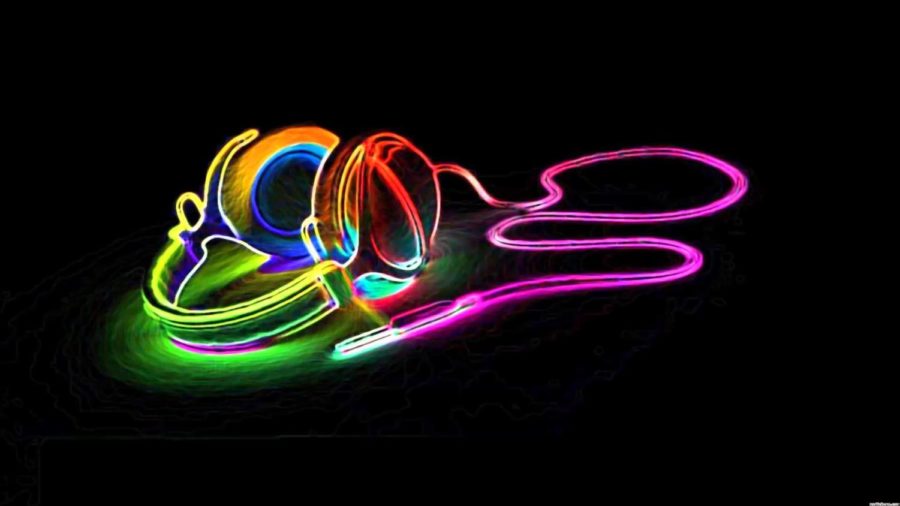The Maestro’s Corner: A D.J. Favorite
The Evolution of House Music
Monstercat EP Release: Eminence - Universe (feat. Meron Ryan)
November 14, 2017
There are so many different kinds of music that it can sometimes be confusing to try and differentiate between the genres. This is especially the case with electronic music, because there are often great overlaps between its many genres. Electronic music is everywhere, from the bass-boosted melodies vibrating a dance floor to the smooth techno soundtrack of your favorite video game. The different types seem to pour into each other; songs placed under one genre may bear heavy influences from another, some are part of crossover genres with no real definition, and some songs don’t fit into a genre at all.
One of the best examples of this is house music. Many producers today make house music, and it’s a wildly popular music movement that dominates the club scene. However, these modern beats sound very different from the first examples of house music. (Want to hear some great old-school house? Try Pump up the Volume by M|A|R|R|S at https://www.youtube.com/watch?v=w9gOQgfPW4Y.)
House music got started in the 1980’s, with sound experimentation in New York disco houses. Disco was falling out of favor, so DJ’s turned to their patrons and asked what they wanted to hear. The overwhelming response was “rhythm!” So, DJs took their old disco tracks and started to break them apart, pulling out the extra instruments and melodies, and stripping them down to a barebones beat before dressing them up again with newer electronic instruments.
So, what defines house music as a genre is not so much how it sounds (as you can quickly determine by comparing the featured video in this article to the one at the link above) but more how it feels – house music is supposed to make you want to dance. Early house music is generally characterized by a mechanical, minimalistic 4/4 beat, generated on synthetic bass and drum, with a slight disco “swing” to it. As house progressed, however, its disco influences faded in favor of elements taken from synth pop, reggae, trance, hip-hop, and even jazz. The bass deepened, the melody emerged, and different styles of house began to develop. Modern house music is incredibly diverse, because of the wide variety of sounds and textures that can be produced with computer-based music production programs.
Depending on the influences they draw upon, house tracks can be labeled “ghetto house” (hip-hop influence), “deep house” (surrealist influence), “tech house” (techno influence), “microhouse” (minimalist influence) “acid house” (filthstep influence), or any one of a number of other types. Additionally, crossover genres have appeared, where house crosses with other styles of pop and electronic music to produce euro house, tech house, jump house, and electro house (among others).
There are, however, a few specific elements of house music that seem to be fairly consistent. One of them, especially in tracks from the early 2000s, is the presence of a heavy kick drum on every beat. This drum is usually offset by a different percussive instrument, which is what gives the tracks their fast-paced, driving feel. In some house tracks (such as in the featured video) the kick drum is replaced with an electronic bass drum, but the effect is the same.
This brings us to the last – and perhaps the most important – element of house music: syncopation. This is the technique of placing emphasis on the off-beat, which gives the song a sense of motion and an appealing, alluring cadence. Nearly every house music track you listen to will have some element of syncopation. This is what makes house music so perfect for dancing – the staggered beats compel you to move with them. Older house tracks often only have one type of syncopation, the simple method of adding extra beats into the measure in between the measured 4/4 beats (countersyncopation). However, newer house tracks (especially in the more progressive, heavy-electronic genres) sometimes “stack” two different syncopated beats on top of each other, over the base beat. Listen to the transition that occurs in the featured video, at 0:10. The texture of the song builds off the electronic kick drum, first adding another set of drums and glitch noises following a countersyncopated rhythm and then adding an electronic melody following a different, more drawn-out syncopated beat. These elements weave in and out of the song as it moves through its phases, but notice how whenever all three elements are stacked, as they are at 0:15, 0:30, and 5:45, they produce an effect of floating, or levitation. This is the result of double syncopation, and is a hallmark of house music.
Thus, from its rather muddy beginnings as a club-music-disco-offshoot genre, house music has evolved, grown, and spread across the world. Not only has it drawn influences from many different genres, house music has also had its own influence on many popular artists, starting with Madonna’s hits in the 1990s and continuing to influence today’s pop musicians and club DJs in many different areas. Its history might be a bit confusing, but that can’t distract from the genre’s universal appeal. After all, there’s nothing like a little house music to get you dancing.



